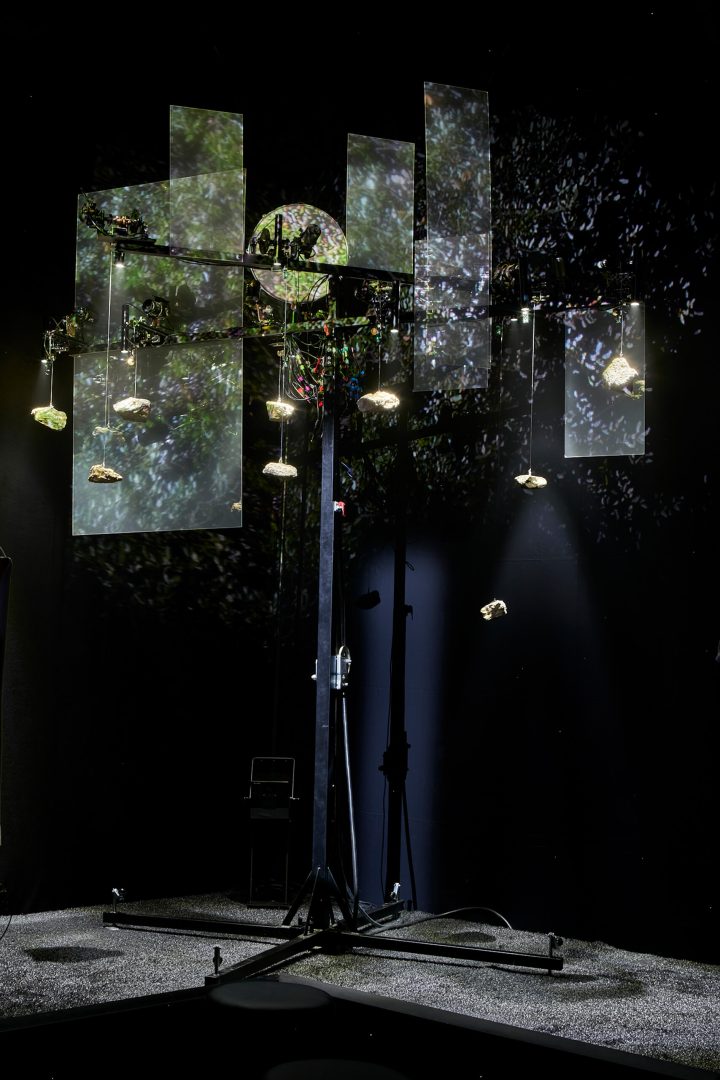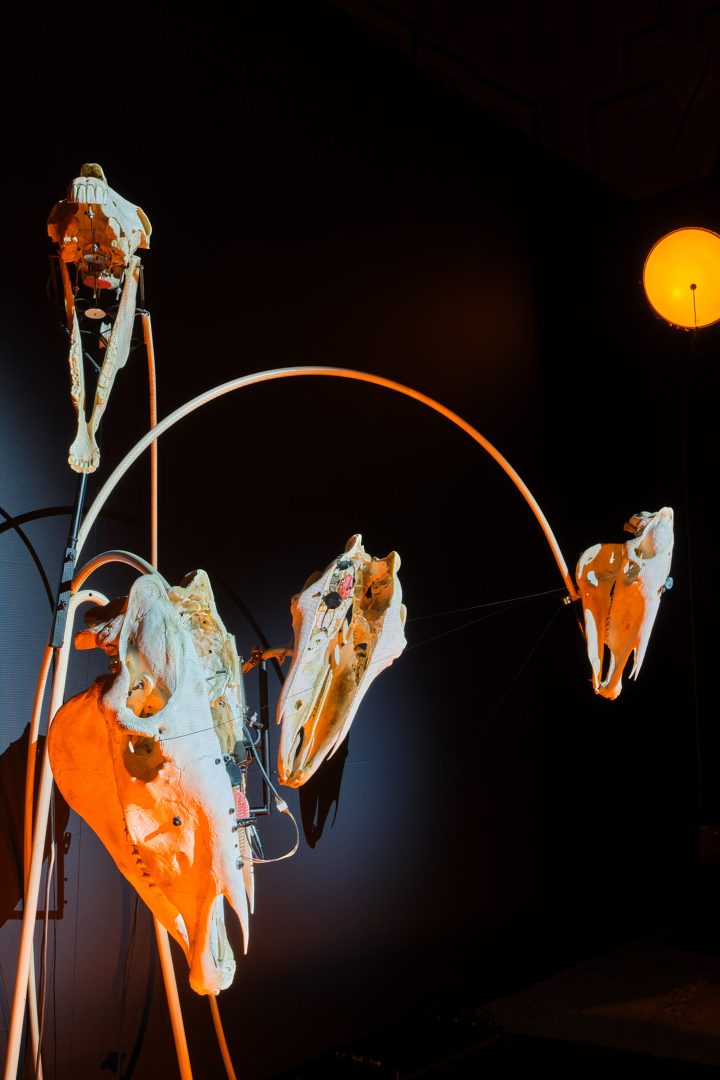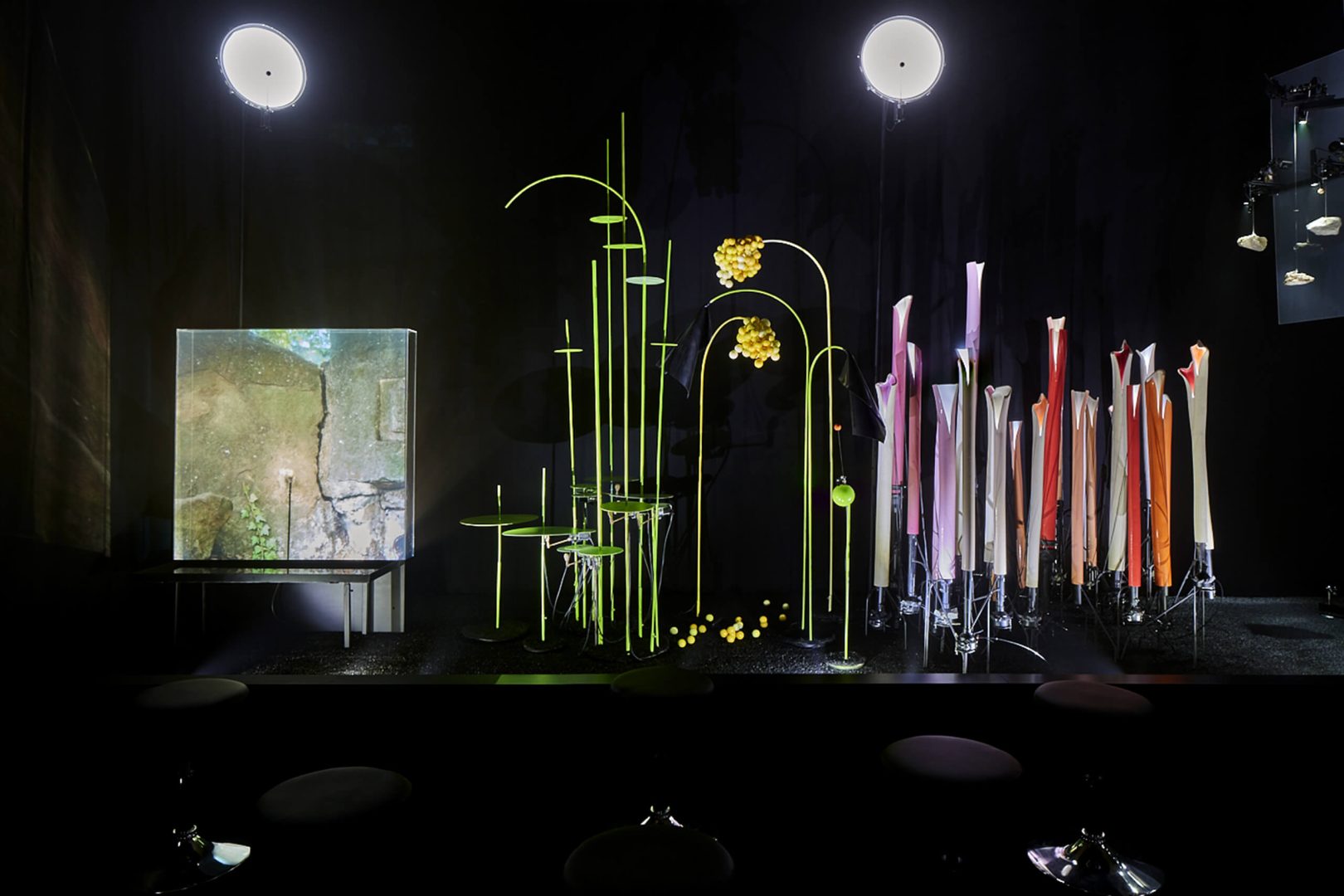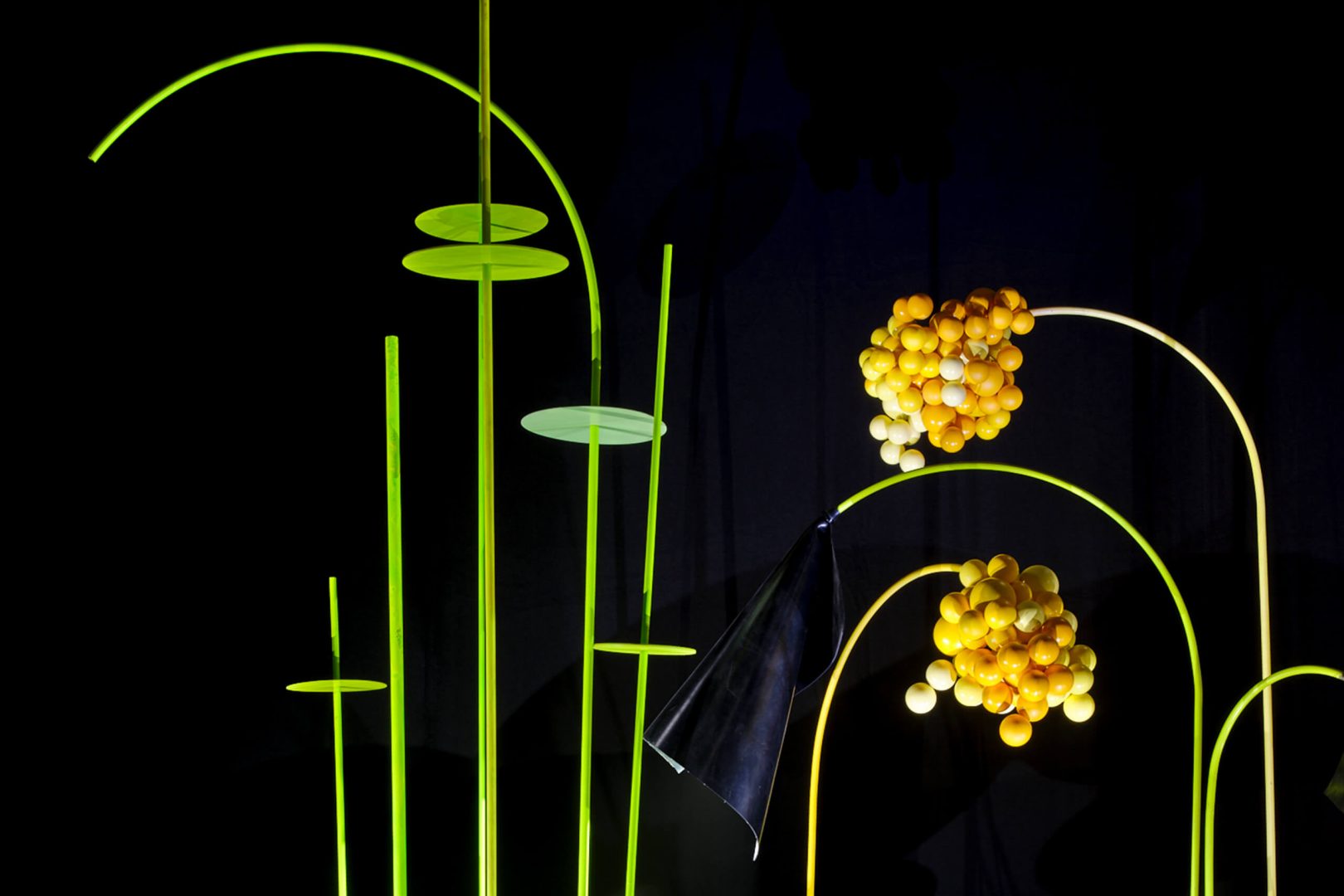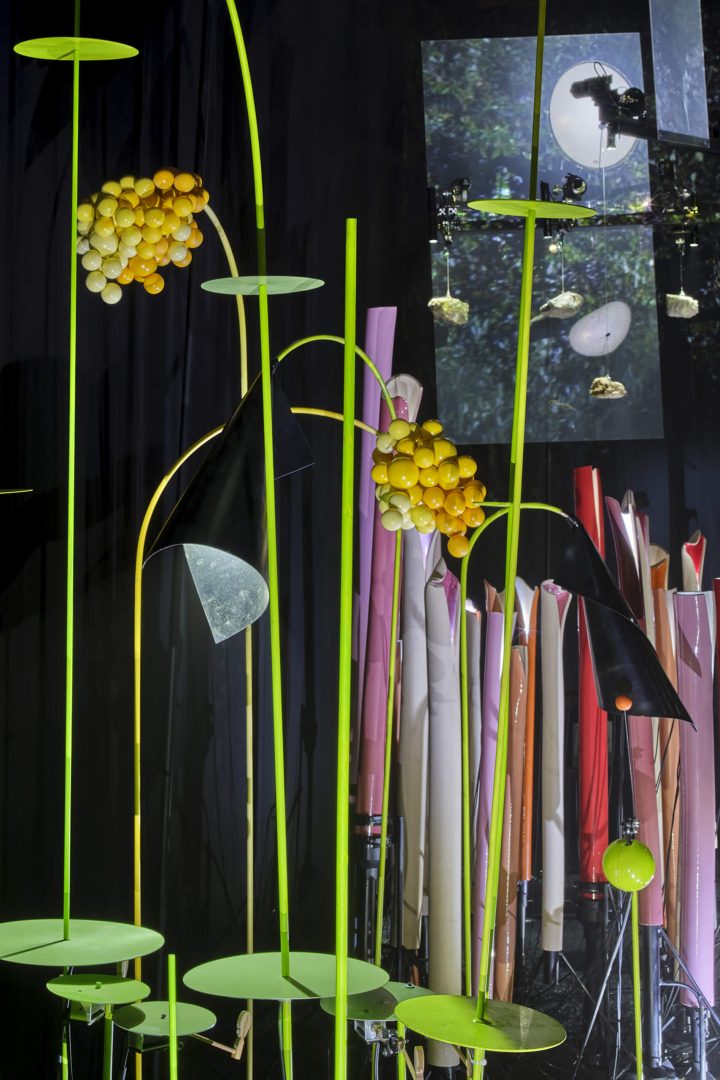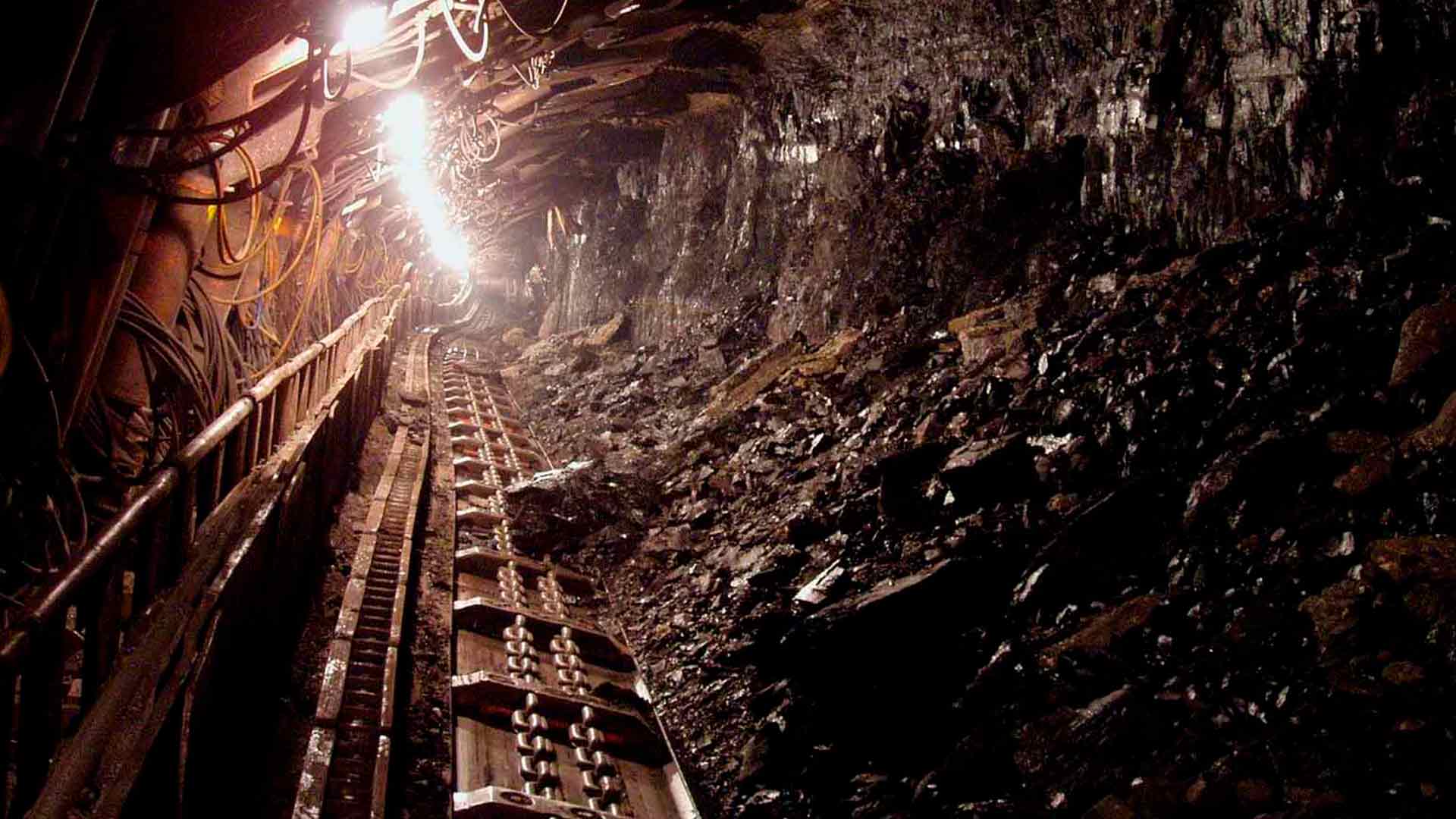
Cabosanroque – Laia Torrents Carulla and Roger Aixut Sampietro
Country: Spain
Biography
Cabosanroque are Laia Torrents Carulla and Roger Aixut Sampietro. Their work revolves around sound and its performative capacities. Their interventions question the exhibition space and formats; they also question the spectator when it comes to inhabiting this physical, temporal and conceptual space; sound and visual. They are interested in artifice and its relation to humans.
They look for tensions between disciplines such as music, theatre, visual arts and sound to open margins, spaces in conflict. Their academic background (music, industrial engineering and architecture) leads them to use technology in all their works, always understood as a tool, as a medium and not as an aesthetic, in a continuous process of research. They often collaborate with other artists, thinkers and writers.
Since 2015 they have been resident artists at the Fundació Lluís Coromina.
Trilogy III: Flowers and Journeys
Third part of the trilogy Three ways to enter.
“It is women who tell the story of war. They cry. They sing as if they were crying.” Svetlana Alexievich, War Does Not Have the Face of a Woman, 2013.
As we delve into the sinister atmosphere of cabosanroque’s latest work, we embark on a journey filled with beauty amid the flowers of a world ravaged by war. We enter a forest, perhaps a garden… or was it a village? A work that combines literature, anthropology, sculpture, music, and artifact, all orchestrated under the baton of sound.
It speaks of war, and it is women and creatures who speak, and not only them but also the earth, the birds, and the trees. Everything that lives on the earth with us.
We will listen to fragments from the book of stories Journeys and Flowers, with the voice of women forced to flee from a current war. Transplanted into Ukrainian, Mercè Rodoreda’s words become incomprehensible sounds to us, yet they reveal an internal rhythmic logic, a musicality of the text that will survive beyond any translation.
Cabosanroque finds in War Does Not Have the Face of a Woman and Last Witnesses by Svetlana Alexievich a perfect alliance with Mercè Rodoreda for this journey, which helps us understand the transition from reality and memory to fiction, and to what extent we need fantasy to prevent a reality, which cannot be digested or explained, from utterly devastating us.
Credits
Creation, dramaturgy and direction: cabosanroque
Original text: Mercè Rodoreda, Svetlana Aliéxievitx.
Adaptation: cabosanroque
Featuring: Rocío Molina, Mónica López, Núria Martínez Vernis i refugiades ucraïneses a Catalunya (Mariia Kashpurenko, Nadiia Rusanova, Olena Radko, Hanna Hrechana, Alexandra Hrechana, Maria Hrechana, Hanna Rei, Barbara Sokilovska i Mariia Sokolovska).
Translation: Miquel Cabal (RU-CAT), Olena Velykodna (CAT – UA)
Original music: Cabosanroque, adaptation from Strange fruits by Billie Holiday sung by Núria Graham, adaptation of Lux Aeterna by György Ligeti sung by Cor de Teatre (Mariona Callís, Sara Gómez, Nuri Hernández, Ànnia Pons) and directed by David Costa.
Light design: cabosanroque, Cube.bz
Video: Frau recerques visuals
Tech assesment: Julià Carboneras
Ceramics: Toni Cumella i cabosanroque
Thanks: Enric Masgrau, David Costa, Alba Codina, Xevi Gibert, Panxi Badi, Maria Bohigas i Alejandro Dardik, Glòria Bordons, Martí Sales, Oriol Sauleda, Pere Sarquella, Ricard i Rosa Carnissers, Can Pericus, Centre d’acollida de refugiats ucraïnesos del barri de Sant Narcís, Cesc Feixas i Carme Torrents, Lluís Coromina, Ceràmiques Cumella.
Una coproducció de cabosanroque , Grec 2023 Festival de Barcelona, , Temporada Alta 2022, Naves del Español en Matadero 2023, Teatre Nacional de Catalunya 2023, Théâtre Garonne – Scène européenne 2024 i Centre de Cultura Contemporània de Barcelona (CCCB)
Amb el suport de la Departament de Cultura de la Generalitat de Catalunya, la Fundació Lluís Coromina, Alumilux, Teatre Municipal de Girona, Cultura Banyoles i la Fundació Mercè Rodoreda.
The Beaver That Cried
Credits :
Direction and Authorship: Cabosanroque
Concept, creation, dramaturgy, sound design, and scenography: Cabosanroque (Laia Torrents Carulla & Roger Aixut Sampietro)
Construction : Cabosanroque & Kike Blanco
Original music : Cabosanroque
Adaptation Manuel de Falla : Cabosanroque
Technological development: Julià Carboneras Girga
Musical performance: Pere Jou
Images: Cabosanroque & Frau Recerques Visuals
Voiceovers in Catalan and Spanish: David Climent & Mónica López
Voiceovers in English: Nick Macarte & Victòria Macarte
Executive production: Helena Febrés Fraylich
PRODUCTION: Compañía Nacional de Teatro Clásico, Cabosanroque, Departament de Cultura i de l’Institut Català de les Empreses, Generalitat de Catalunya, Temporada Alta de Girona
WITH THE SUPPORT OF Centre de Creació d’Arts Escéniques – El Canal de Salt, la Fundació Lluís Coromina y Amilux
DURATION: 50 min aprox.
* This performance uses: smoke machines and strobe lights.
Synopsis :
Nearly 400 years later, the four carts that once carried the scenery of « The Great Theater of the World » return to the stage. Inside, as in the past, they carry pieces of nature and stage magic devices, rocks and mountains that transform into caves, stages, and machinery as described by Calderón de la Barca in the memoirs of appearances of each sacramental auto.
The world remains a great theater, and it will be represented as such, through a theatrical game, but its characters are no longer the same. We are in the times of the Anthropocene, nature is dying, we have read Nietzsche, and the Author, the World, and mankind have changed irreversibly.
Two different plays overlap here: one that occurs inside the four boxes, with a group of spectators on the stage, and another listened to by a different group from the stalls through headphones. Men, as Calderón decided, will be both spectators and characters at the same time.
Halfway through the play, the roles will be exchanged. Words, images, and sound are misaligned, and the spectator will not be able to resolve the friction between nature and artifice until they have completed the two different roles.
Cabosanroque continues to investigate the theatrical format and question the relationship of the spectator with the stage, this time reinterpreting the theatrical device of “The Great Theater of the World” in which the theatre and stage are an allegory of life.

